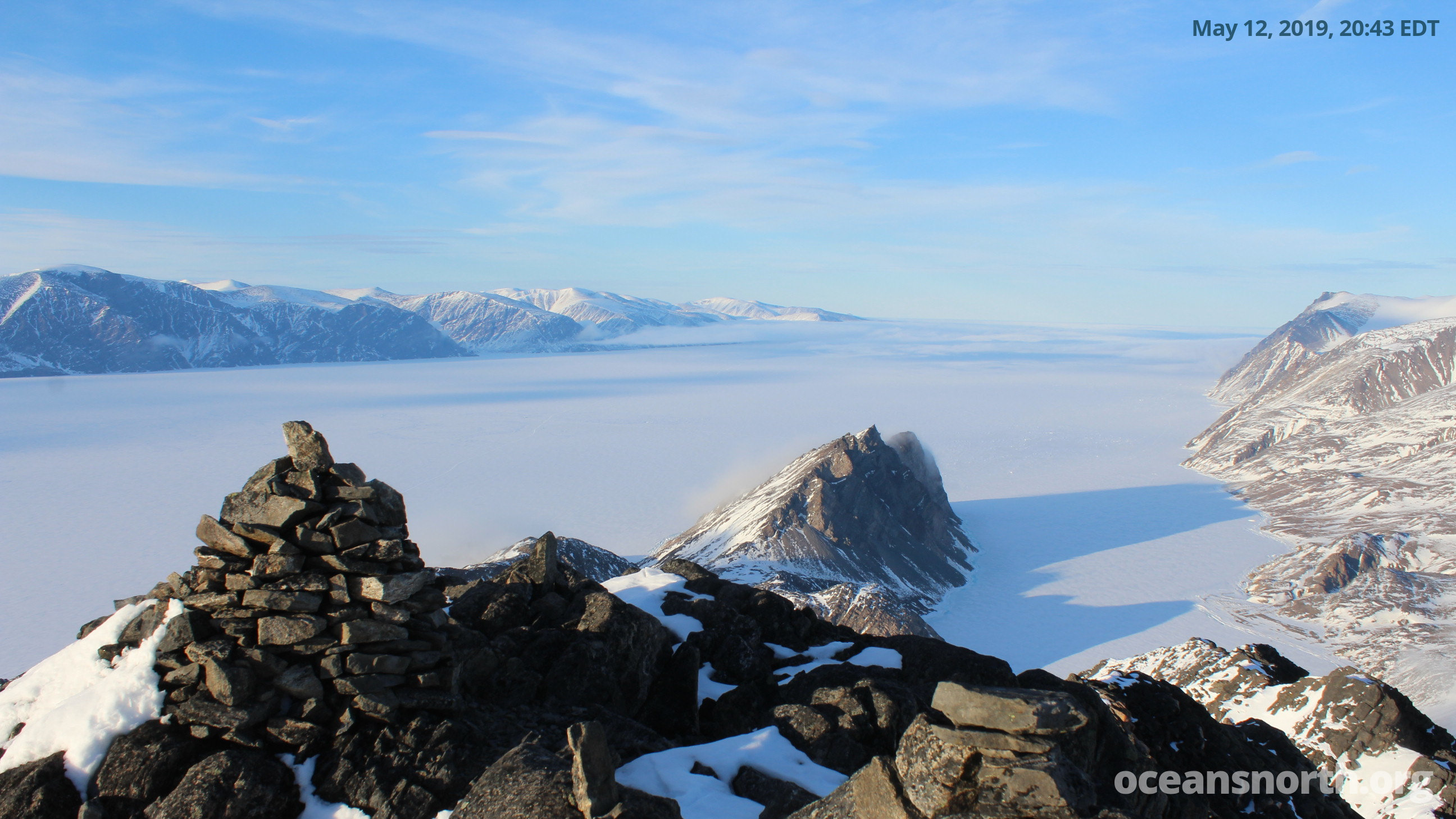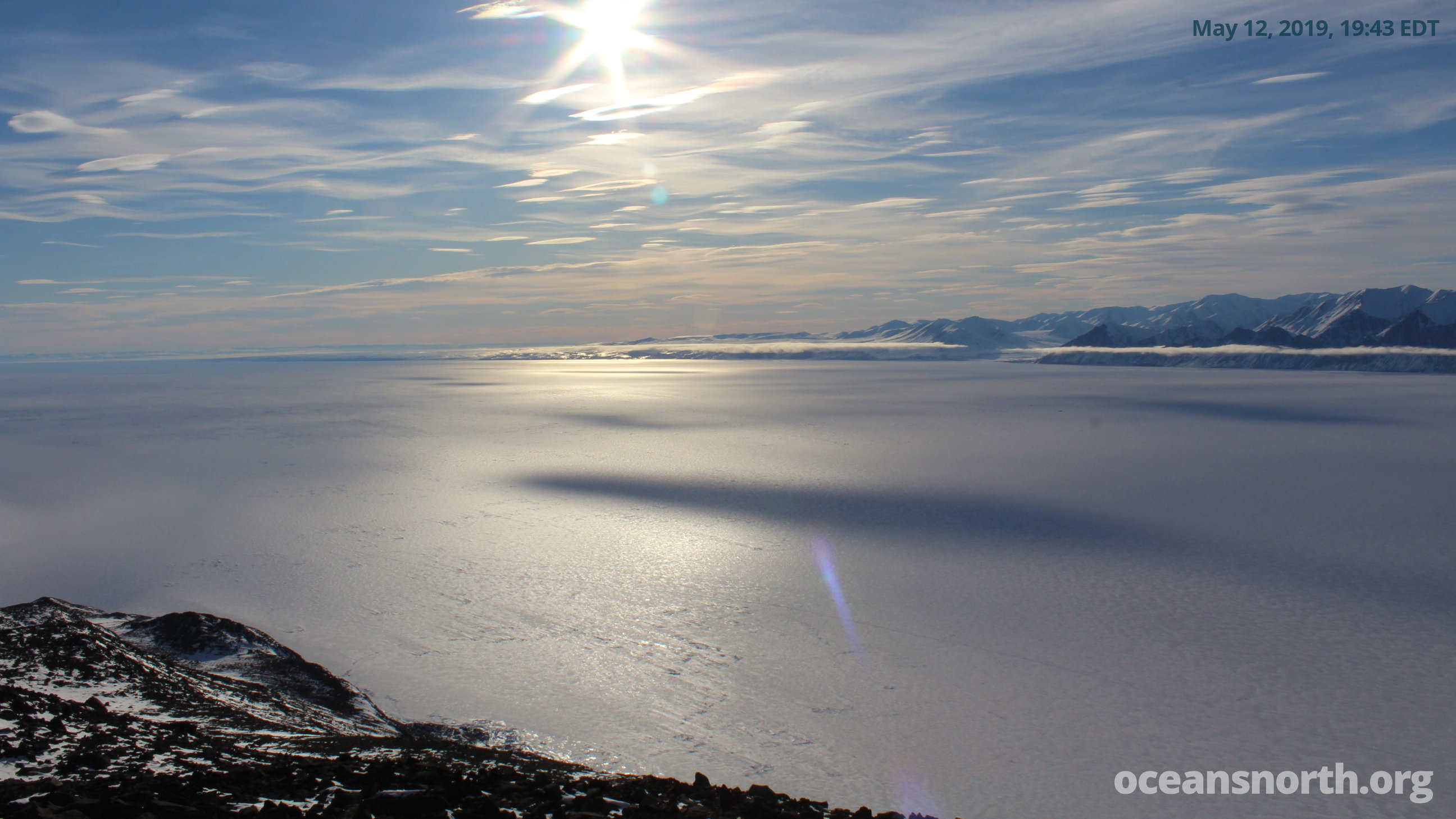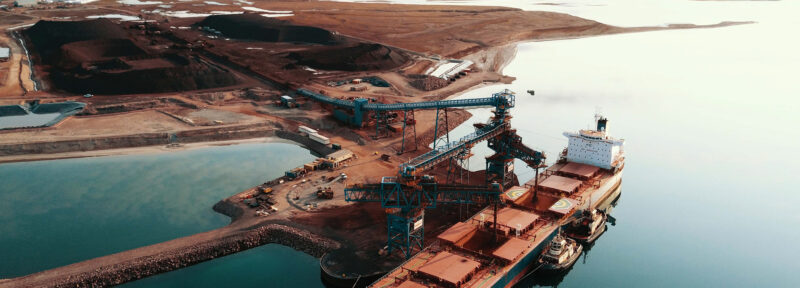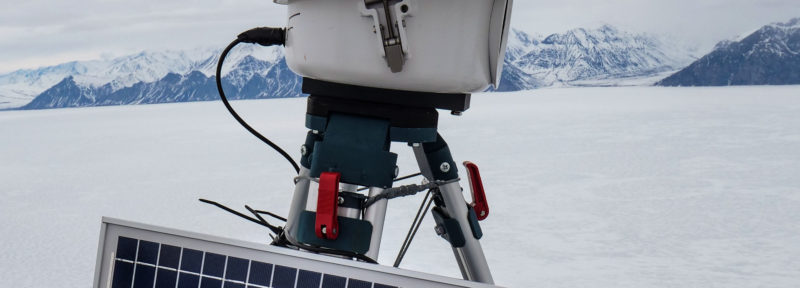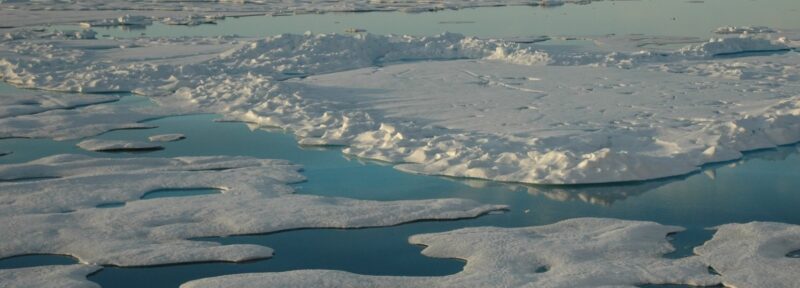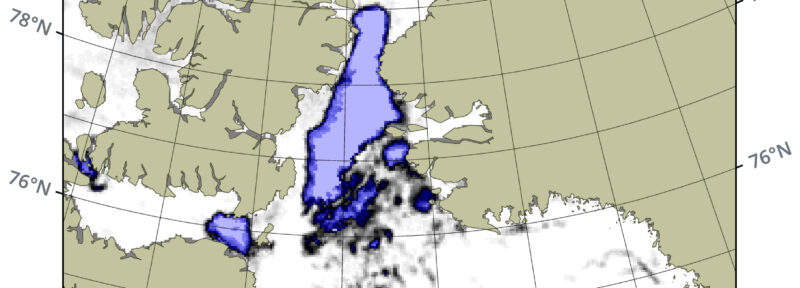Sea Ice Cams Spring to Life in Nunavut’s Eclipse Sound
Time-lapse camera image from "Floe Cam" on Mt. Herodier above Eclipse Sound.
Crédit : Oceans North
Two time-lapse cameras installed a year ago above Nunavut’s Eclipse Sound to monitor sea ice began transmitting their first images of 2019 on May 1st. The cameras, perched atop Mt. Herodier and powered by solar-charged batteries, had shut down in mid-September when the shorter days reduced available sunlight.
The first images of the season, sent via cellular network to the Oceans North website and the touchscreen in the Nattinak Visitor’s Centre in Pond Inlet, generated plenty of excitement from the team working on this project.
“It was kind of a long shot from our perspective, but it turned out they did indeed reboot,” said Jeremy Davies, a marine conservation geographer with Ocean Conservancy, which partners with Oceans North. Davies led the team installing the cameras last June.
Oceans North began the sea ice monitoring project in 2015, working closely with hunters and others in Pond Inlet, as well as researcher Dr. Dany Dumont from the Universitè du Quèbec á Rimouski. But until now, the cameras had to be installed and removed each year, a difficult task in the steep terrain.
Local residents, who travel across the sea ice to hunt, and researchers who study this marine ecosystem, are using the images to get a general sense of ice conditions before break-up in mid-July. The data is also useful for tracking the impact of icebreaking and shipping related to the Mary River mine located at the southern tip of the Sound. The floe edge, where landfast ice meets open water, is an area of high biological productivity. Eclipse Sound is also in the heart of the proposed Tallurutiup Imanga national marine conservation area.
“People are looking at the images for sure,” said Kristin Westdal, marine biologist for Oceans North. “And they may be even more valuable in the future as shipping increases.”
Time-lapse camera image from "EclipseCam" on Mt. Herodier above Eclipse Sound, Nunavut.
Crédit : Oceans North
The sea ice cam images were popular on the Oceans North website, attracting almost 2,000 visits in the last year. The ice cam footage on the touchscreen in the visitor’s centre has attracted lots of interest from local residents, hunters, visitors and researchers.
The western-facing camera, called the Eclipse Cam, came back online with its original settings intact and began sending near real-time images every two hours. The camera pointed east, Floe Edge Cam, has been transmitting pictures every five minutes and might need to be shut down in mid-July for servicing.
Ruth Teichroeb is senior manager of communications for Oceans North.

